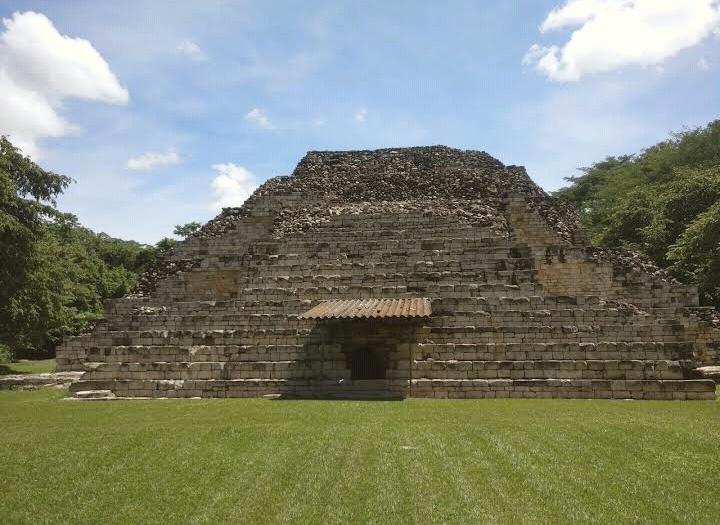El Puente, nestled in the lush valleys of Honduras, is a testament to the ingenuity of the ancient Maya civilization. This archaeological site, part of the larger Copán complex, offers a glimpse into a sophisticated culture that thrived in Central America long before European contact. El Puente served as a vital hub, connecting various Maya settlements and facilitating trade, politics, and cultural exchange. Today, it stands as a significant historical and cultural landmark, drawing scholars and tourists alike to uncover its mysteries and marvel at its architectural prowess.
Get your dose of History via Email
Historical Background of El Puente
El Puente was discovered in the 19th century, but it wasn’t until the late 20th century that extensive excavations began. George Hasemann, a prominent archaeologist, played a key role in its exploration. The Maya built this site during the Classic period, which is evident from the structures and artifacts found. Over time, El Puente saw various inhabitants, including later cultures that left their mark. It was not just a residential area but also a strategic location for the Maya, playing a role in regional power dynamics.
The site’s construction reflects the Maya’s advanced understanding of architecture and urban planning. They built El Puente with precise stone-cutting techniques, creating a complex that included residential areas, plazas, and a ball court. The Maya’s skill in crafting such structures is still evident in the ruins that remain. El Puente’s strategic importance is underscored by its location, which allowed it to control trade routes and maintain political influence in the region.
Throughout its history, El Puente experienced periods of growth and decline. It reached its zenith during the Classic period, when the Maya civilization was at its peak. However, like many other Maya sites, El Puente eventually fell into disuse. The reasons for this decline are still debated, with theories ranging from environmental changes to societal upheaval. Despite this, the site’s remnants provide valuable insights into the Maya’s way of life.
El Puente’s significance extends beyond its historical role. It has become a symbol of cultural identity for the people of Honduras. The site’s preservation and study have fostered a greater appreciation for the country’s pre-Columbian heritage. Moreover, El Puente has contributed to our understanding of the Maya civilization, offering clues about their social structure, economy, and religious practices.
Today, El Puente is an important archaeological site for researchers and a captivating destination for visitors. Its discovery and ongoing study have enriched our knowledge of the ancient Maya. The site continues to reveal secrets of the past, ensuring that the legacy of this remarkable civilization endures.
About El Puente
El Puente is a medium-sized archaeological site, showcasing the architectural mastery of the Maya. The site includes several pyramids, plazas, and a ball court, all constructed using local materials. The Maya utilized limestone and other readily available resources to create their structures, employing advanced techniques to cut and transport these materials.
The main pyramid at El Puente is a focal point of the site, demonstrating the Maya’s skill in creating monumental architecture. This pyramid, like others in the Maya world, likely served both ceremonial and administrative purposes. The intricate carvings and stucco work that once adorned these buildings hint at the site’s former splendor.
El Puente’s ball court is another significant feature, indicative of the cultural importance of the ballgame in Maya society. This court, where the ancient ballgame was played, was not just for sport but also had religious and political significance. The game could symbolize cosmic battles and was sometimes associated with human sacrifice.
The layout of El Puente reveals much about Maya urban planning. The site was carefully designed to align with astronomical events, which were integral to Maya religion and calendar systems. The plazas and causeways facilitated not only the movement of people but also the flow of goods, as El Puente was a key trade center.
Despite the ravages of time, El Puente’s remains offer a window into the world of the Maya. The site’s preservation allows for a better understanding of the construction techniques and urban design principles of this ancient civilization. El Puente stands as a monument to the Maya’s architectural achievements and their enduring legacy.
Theories and Interpretations
El Puente has been the subject of various theories and interpretations since its discovery. Scholars have debated its purpose, with some suggesting it was primarily a religious center, while others believe it was a bustling trade hub. The presence of both temples and market areas supports the idea that El Puente served multiple functions within Maya society.
One of the mysteries of El Puente is the meaning behind its architectural symbolism. Some structures may represent celestial bodies or deities, reflecting the Maya’s deep connection with the cosmos. Researchers have used historical records, such as the Dresden Codex, to interpret these symbols and gain insights into Maya beliefs.
The dating of El Puente has been carried out using methods such as radiocarbon dating and ceramic analysis. These techniques have helped establish a timeline for the site’s occupation and use. The results suggest that El Puente was most active during the Classic period, aligning with the height of Maya civilization.
There are also theories about the decline of El Puente. Some archaeologists point to evidence of environmental changes, such as drought, that could have disrupted agriculture and water supply. Others consider internal factors, like social unrest or warfare, as possible causes for the site’s abandonment.
Despite the ongoing research, many aspects of El Puente remain open to interpretation. Each discovery adds a piece to the puzzle, but the full picture of life at El Puente during the Maya era continues to elude historians. The site’s enigmatic past fuels both scholarly debate and public fascination.
At a glance
Country: Honduras
Civilization: Maya
Age: Classic period (approximately 250 to 900 AD)
Conclusion and Sources
Reputable sources used in the creation of this article include:
- Wikipedia: https://en.wikipedia.org/wiki/El_Puente_(Maya_site)
- Britannica: https://www.britannica.com/topic/Maya-people
- World History Encyclopedia: https://www.worldhistory.org/maya_civilization/

